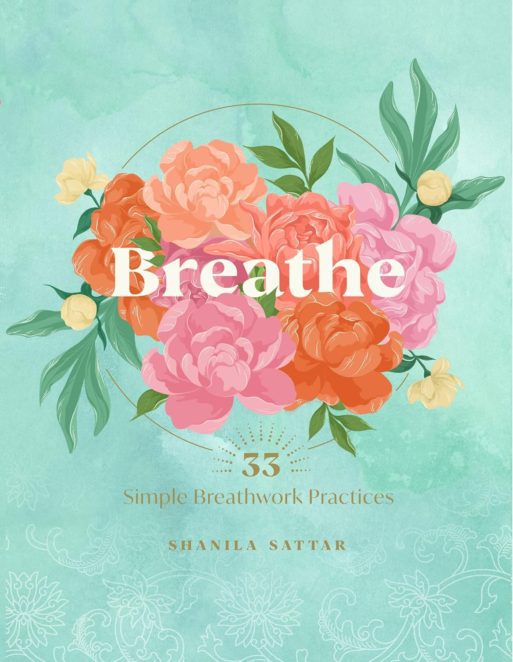
How often, when we’re struggling, are we told to just breathe? Yet few of us know how to do that purposefully with any regularity, depth or understanding. Now, Shanila Sattar hopes to enlighten us with her 2022 book, “Breathe: Simple Breathwork Practices.” Sattar takes us on a journey through 33 different breathing exercises that can support our mood, energy, inner healing, relaxation and grounding, or sleep.
With its beautiful, hardcover binding and bright floral presentation, just paging through “Breathe” feels like an act of self-care. Sattar’s chatty, informal voice leads readers through a simple explanation of what breathwork is (“intentionally regulating our breath”); why it’s important (“when we give ourselves an opportunity to breathe, we activate the natural ways our body already knows how to support us”); and what it can do for us (“activation” or “restoration” of the body). She also addresses the potential for unexpected emotional, mental, physical or spiritual experiences, while also providing insight into the use of visual, scented or listening aids. And a “Breathwork Inventory” guides readers to check in with their breath and body before each practice.

Shanila Sattar
Credit: AlwaysPlay Studios
People who are struggling with difficult emotions like grief or sadness may find these breathwork practices helpful for processing their feelings while moving them through the body. At the same time, those experiencing high levels of anxiety can find that breathwork further activates their nervous system. Rather than working through the exercises consecutively, it is advisable to check in with one’s body and feelings to discover what is needed that day. A mood booster? Or, relaxation? Sometimes, grounding exercises may be the most appropriate technique. In addition, Sattar notes that people with a history of light-headedness or fainting may need to check in with a doctor before trying breathwork.
Some practices – such as humming, chanting or laughing – may be familiar to readers but not something they’ve previously considered as a healing practice. Other types of breathwork like Lion’s Breath, draw on yogic philosophies. Readers may want to find a private space to engage with the book, where they can let go of their inhibitions to experience its full effects.
In some cities, breathwork groups are available in person. Other practitioners may offer sessions online. For those who are curious about breathwork to process deep emotions or trauma, support their bodies or find healing, Sattar’s book is one inviting place to begin.
In addition to her book, Sattar has founded AlwaysPlay Studios and The Integrative Healing Academy, based in Austin Texas, to train sound healers and breathwork facilitators.

 “Breathe” by Shanila Sattar
“Breathe” by Shanila Sattar


 How Dare You Die Now!
How Dare You Die Now!
 Debating Medical Aid in Dying
Debating Medical Aid in Dying
 “Help Me, Helen”
“Help Me, Helen”














